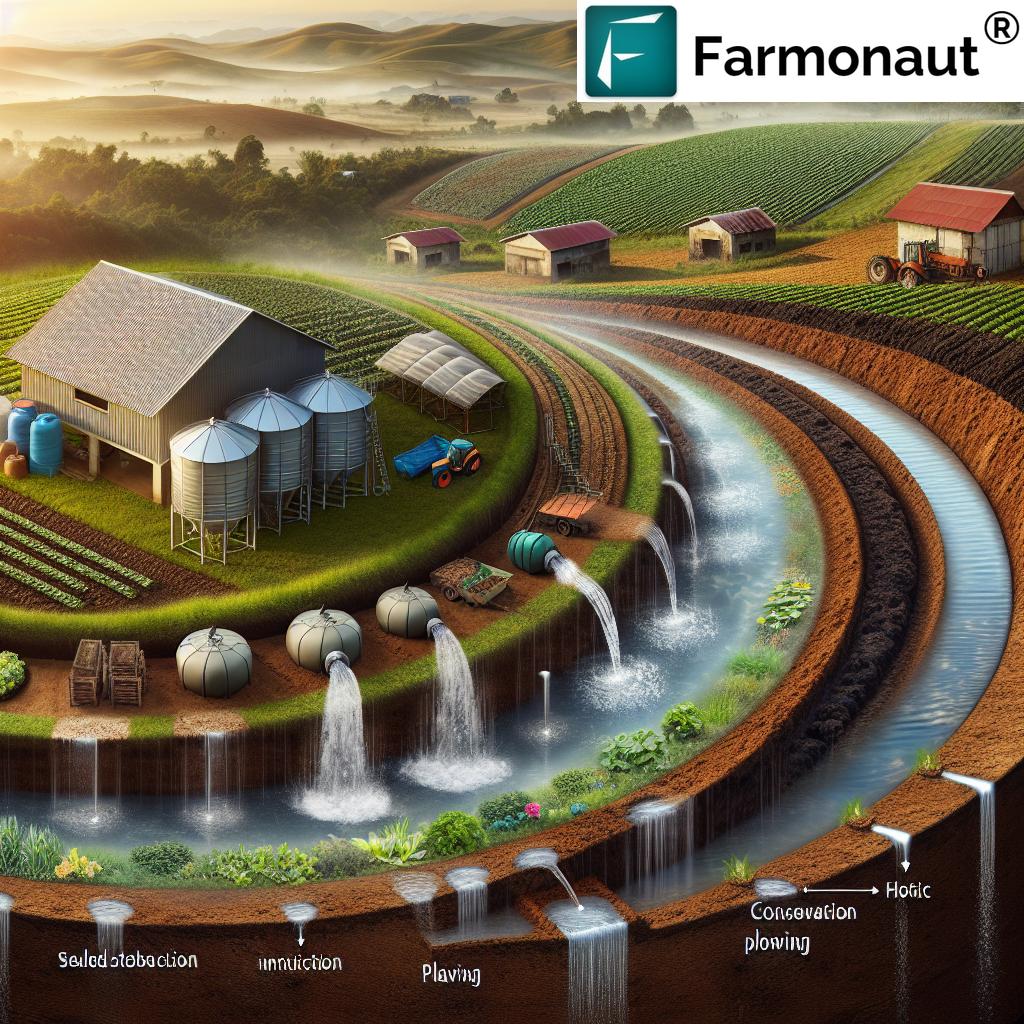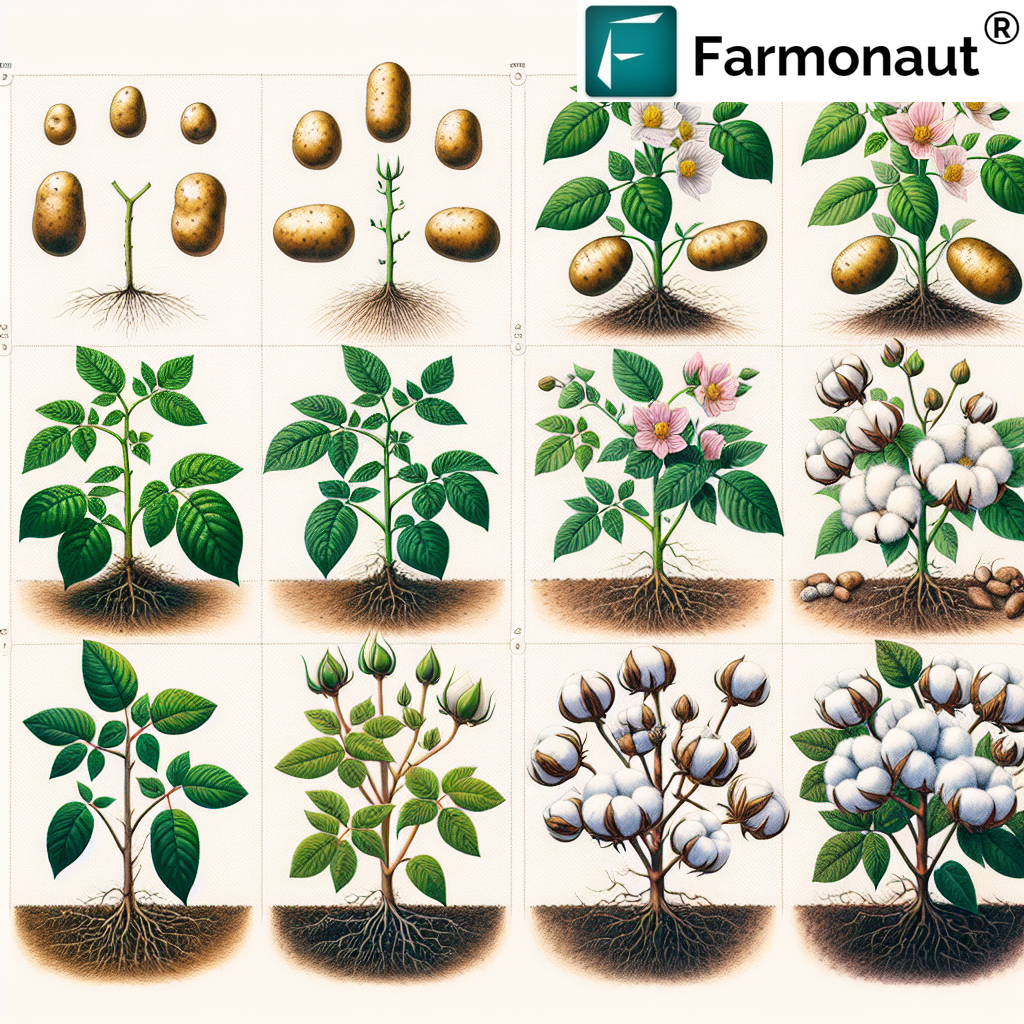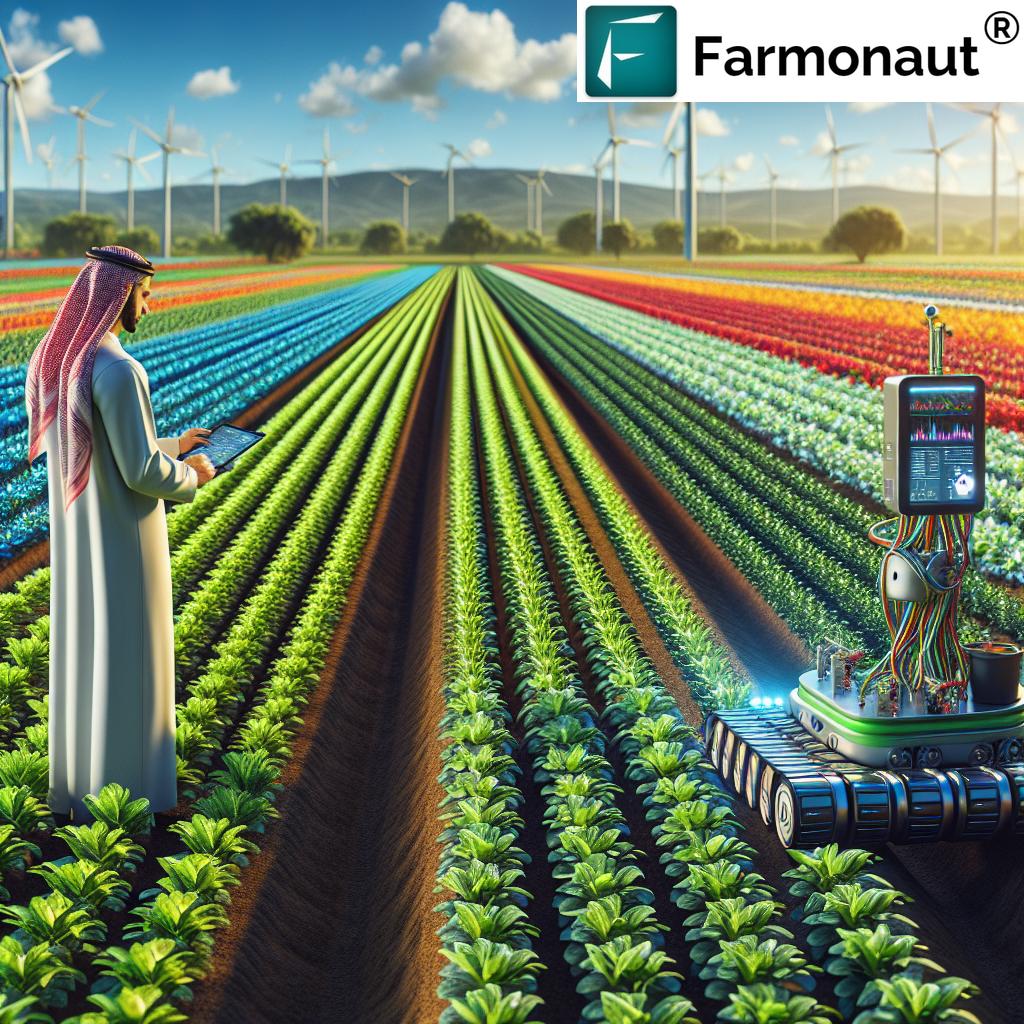Sustainable Water Management: 7 Shocking Farmer Secrets
“Precision irrigation can reduce water usage by up to 50% compared to traditional methods in sustainable agriculture.”
Across agriculture, farming, and forestry, sustainable water management stands out as a critical component in ensuring our collective future. As unpredictable climate change events intensify and global populations grow, the urgency to optimize water use while supporting soil health, crop productivity, and environmental stability is at an all-time high.
But what sustainable practices truly make the difference? What are the secrets that top-performing farmers use to reduce water waste, increase yields, protect resources, and build resilient agricultural systems? Here, we reveal seven farmer secrets, each grounded in proven, innovative methods and supported by leading-edge technologies, to enhance agriculture, forestry, and ecological balance for generations to come.
Understanding Sustainable Water Management
With the focus on sustainable water management, our goals are to:
- Optimize the efficiency and availability of water resources.
- Minimize waste and protect water quality for our environment and communities.
- Enhance soil structure, conservation, and biodiversity.
- Preserve resources for future use, allowing our agricultural and forestry operations to thrive even in changing climatic conditions.
In essence, implementing tailored water conservation strategies in farming means integrating smart technologies, advanced knowledge, and ecological ethics to benefit both today’s and tomorrow’s farmers.
7 Shocking Farmer Secrets – Sustainable Water Management Practices
What farmer secrets have led the revolution in sustainable water management? Let’s dive into the practical methods, modern technologies, and ecological solutions that are transforming fields, forests, and farms worldwide.
1. Precision Irrigation Systems – The Heart of Water Savings
Focus Keyword: precision irrigation systems
The advent of precision irrigation systems has been nothing short of revolutionary in water management for agriculture. By utilizing technologies such as drip irrigation, micro-sprinklers, sensors, and weather data, we can deliver water directly to the roots of each plant in exactly the quantity needed, reducing waste and optimizing crop health. Drip and sprinkler systems, integrated with soil moisture and climate sensors, enable farmers to create tailored watering schedules that respect both crop requirements and local environmental conditions.
- Benefits: Cuts water use by up to 50% compared to flood irrigation; boosts crop yields; lowers fertilizer and energy costs; reduces soil erosion.
- Supporting technology: Satellite-based crop monitoring systems, like those from Farmonaut, provide real-time soil moisture and crop health data, empowering smarter irrigation decisions.
- Eco impact: Helps preserve groundwater and surface water, promotes efficient resource utilization, and supports carbon footprint reduction initiatives in farming.
2. Rainwater Harvesting for Farms – Turning Rain into Resource
Focus Keyword: rainwater harvesting for farms
Rainwater harvesting captures rain as it falls, storing it in tanks, ponds, or underground reservoirs for later use. By collecting rainwater, we reduce dependency on groundwater and surface supplies, which are increasingly under threat from overuse and climate variability.
- Implementation: Install gutter-connected storage tanks or create farm ponds lined to prevent seepage. This harvested water is invaluable during dry periods and droughts.
- Benefits: Ensures continuous water supply, especially in arid regions; reduces farm input costs; supports ecological balance by minimizing runoff and soil erosion.
- Tech support: Tools such as large-scale farm management dashboards make it easier to analyze rainfall patterns and manage water assets efficiently.
3. Soil Health Management in Agriculture – The Foundation of Water Retention
Focus Keyword: soil health management in agriculture
Healthy soil is the cornerstone of efficient water management. With good structure and organic matter, soil can absorb and hold vast amounts of water for crops to access in times of need. Activities like reduced tillage, organic amendments, mulching, and cover cropping enhance infiltration, decrease evaporation, and build vital soil life.
Key Stats: Uncompacted, organic-rich soils can store up to 20,000 gallons of water per acre, safeguarding crops against drought and reducing the need for frequent irrigation.
- Improved infiltration and water-holding capacity.
- Lower pest and weed pressure.
- Carbon sequestration and reduced carbon footprint for a more sustainable footprint.
- Enhanced soil structure and health for lasting productivity—monitored effectively through real-time crop and soil health satellite platforms like Farmonaut.
4. Agroforestry Practices – Integrating Trees for Water and Biodiversity
Focus Keyword: agroforestry practices
Agroforestry practices involve the deliberate combination of trees and shrubs with crops and/or livestock on the same land. This approach increases water infiltration, reduces soil erosion, and provides shade, all while fostering rich biodiversity.
- Trees improve soil structure, enhancing water absorption and protecting against rainfall runoff.
- Forest cover mitigates local heat and conserves soil moisture by reducing evaporation.
- Agroforestry supports habitat diversity and natural pest control, aligning productive activities with conservation values.
- Technology boost: AI-powered advisory tools from Farmonaut can help optimize tree-crop-livestock arrangements for your unique farm conditions.
- Practice examples: Alley cropping, windbreaks, riparian buffers, and mixed orchards.
5. Conservation Tillage – Preserving Soil, Saving Water
Focus Keyword: conservation tillage
Conservation tillage refers to reduced or no-till practices that disturb the soil as little as possible. By leaving plant residue on the surface, we minimize erosion, conserve soil moisture, and build up organic material.
- Benefits include less runoff, higher soil organic carbon, better water-holding ability, and healthier crops.
- Implementation: Strip-till, mulch-till, and direct-seeding systems.
- Supports sustainable product traceability and eco-responsible farming methods.
6. Crop Rotation Benefits & Diversification – Balancing Soil and Water
Focus Keyword: crop rotation benefits
Crop rotation and diversification change the cycle of crops planted on the same land over time. This process helps maintain soil structure, reduce pathogen and pest buildup, and maximize water usage efficiency by alternating deep- and shallow-rooted species.
- Makes the most out of seasonal rainfall and irrigation cycles.
- Supports sustainable protein and food security systems (e.g., legumes return nitrogen, while cereal grains stabilize soil).
- Monitored with: Satellite crop health analytics, available via Farmonaut’s affordable farm management app.
7. Silvopasture Systems – Integrating Livestock for Water and Resilience
Focus Keyword: silvopasture
Silvopasture combines forestry and rotational livestock grazing. This creates shaded areas for animals, reduces their water consumption and stress, and enhances soil fertility with nutrient-rich manure.
- Improves soil carbon content and water retention.
- Reduces heat stress and lowers the risk of overgrazing damage to landscapes.
- Boosts ecosystem services and farm biodiversity in both pasture and woodland settings.
Comparison Table: Sustainable Water Management Practices
| Practice Name | Estimated Water Savings (%) | Estimated Implementation Cost (USD/acre) | Impact on Soil Health (Low/Med/High) | Difficulty Level |
|---|---|---|---|---|
| Precision Drip Irrigation | 30–50% | $800–1500 | Medium | Intermediate |
| Rainwater Harvesting | 20–40% | $300–1200 | High | Intermediate |
| Mulching (part of soil health) | 15–30% | $70–200 | High | Beginner |
| Conservation Tillage | 10–25% | $40–180 | High | Beginner |
| Crop Rotation & Diversification | 10–20% | $0–40 | High | Beginner |
| Agroforestry/Silvopasture | 25–40% | $150–500 | High | Advanced |
| Soil Health Management | 18–35% | $100–250 | High | Intermediate |
Bonus Secrets: SRI, Catchment Sensitive Farming & Innovations
- System of Rice Intensification (SRI): A management system that reduces irrigation demand for rice by encouraging healthier root and soil conditions. It also cuts greenhouse gas emissions and increases yields.
- Catchment Sensitive Farming: Collaborative, landscape-scale actions to protect water quality, reduce nutrient and chemical runoff, and improve environmental outcomes.
- Satellite & AI-Based Farm Management: Farmonaut’s remote sensing platform offers farm- and field-scale crop health, soil moisture, and resource management insights. These empower tailored watering, fertilization, and disease-prevention strategies for every growing season. Try it on Android, iOS, or Web.
Water Management Policy, Financial Incentives & EU Subsidies for Farmers
Focus Keyword: EU subsidies for farmers
Policy and financial support enable widespread adoption of sustainable water management practices. The European Commission’s recent plans for new EU subsidies for farmers are designed to:
- Encourage adoption of environmentally responsible water management techniques.
- Assist with investing in drought-resistant crops, precision irrigation systems, and soil health programs.
- Reduce the impact of climate change in agriculture, supporting the long-term productivity and sustainability of farms.
Globally, such financial incentives and policies lower the barrier to entry for smallholder and large-scale farmers alike, paving the way for broader implementation of effective water conservation strategies in farming.
-
Crop Loan & Insurance Tools:
Satellite-based field verification simplifies access to financing, reducing fraud risk, and supporting secure, efficient financial aid for climate-resilient agriculture.
How Farmonaut Empowers Sustainable Water Management
Farmonaut is a leader in affordable, tech-driven solutions for sustainable farming. Through a blend of satellite, AI, and blockchain-based systems, Farmonaut supports:
- Satellite-Based Crop Health & Soil Moisture Monitoring: Farmers gain real-time insights on water stress, soil moisture, and crop health without costly hardware. This data powers smarter irrigation and input management.
- Jeevn AI Farm Advisory: Delivers crop-specific, adaptive strategies on water use, irrigation scheduling, and ecosystem resilience, accessible via Android, iOS, Web, and APIs.
- Fleet Management: Optimize the movement and usage of agricultural machinery, leading to reduced operational costs and enhanced resource efficiency.
- Carbon Footprinting: Track agricultural emissions, align with international sustainability standards, and unlock greener farm funding.
- Traceability and Supply Chain Transparency: Blockchain-powered solutions bring credibility and ecological transparency from field to consumer.
Value over legacy systems: Unlike traditional hardware-intensive solutions, Farmonaut uses satellite data and machine learning—benefiting everyone from individual farmers to agro-corporates and governments.
Accessible farming everywhere: Farmonaut is available on all major platforms—Web, Android, and iOS. Get started with the Farmonaut App.
“Healthy soil can store up to 20,000 gallons of water per acre, boosting drought resilience in farming.”
Challenges & Future Directions in Sustainable Water Management
- Technology Access: Not every farm has the means or knowledge to implement advanced water-saving systems.
- Financial Barriers: Upfront costs for improvements like precision irrigation or rainwater harvesting can be high, but these can be offset by government subsidies and financial products.
- Education and Training: Success relies on both awareness and skills transfer through local extension programs, NGOs, and agri-tech platforms.
- Local Adaptation: Solutions must be tailored to regional crops, climate, soils, and social conditions. There’s no one-size-fits-all prescription.
- Policy Alignment and Collaboration: Ongoing engagement between farmers, governments, tech providers, and scientists is crucial to develop scalable, site-specific water management strategies.
The future of sustainable water management will be shaped by partnerships, continued innovation, and making the best use of platforms like Farmonaut for climate-smart, data-driven farming. The onus is on all of us—producers, tech creators, policymakers, and consumers—to work hand-in-hand towards ecological resilience and productivity.
Farmonaut Subscription Plans – Start Your Precision Agriculture Journey
Discover flexible, affordable subscriptions tailored to your acreage and data needs with Farmonaut’s cutting-edge monitoring, advisory, and resource planning tools.
Accessible for farmers, agribusiness, and institutions worldwide.
FAQ: Sustainable Water Management & Precision Irrigation
Q1. What is sustainable water management in agriculture?
A: Sustainable water management is a comprehensive approach utilizing technologies, practices, and policies to maximize water efficiency, minimize waste, and preserve water resources for long-term productivity, environment, and community health.
Q2. How does precision irrigation improve water use?
A: Precision irrigation systems use targeted delivery (like drip or sprinkler) and data (satellite, sensors, climate) to meet each plant’s exact needs, reducing overwatering and wasted resources.
Q3. Why is soil health essential for water conservation?
A: Healthy soil holds more moisture, reduces runoff, and sustains crops during drought. Practices like mulching, cover cropping, reduced tillage, and using organic matter all support this water storage capacity.
Q4. What financial help is available for adopting water-saving practices?
A: Subsidies and incentives from governments (e.g., EU subsidies for farmers), banks, and agri-tech platforms help offset costs for technologies like precision irrigation and rainwater harvesting.
Q5. How does Farmonaut support sustainable water management?
A: Farmonaut provides real-time, satellite-based farm and soil health monitoring, AI-guided recommendations, traceability, and resource efficiency tools, all through easy-access apps and APIs. This empowers farmers to adopt sustainable, precision practices economically.
Q6. Can smallholder farmers access technology like Farmonaut?
A: Yes! Farmonaut is designed to be scalable and accessible. It offers affordable packages and flexible platform access (Web, Android, iOS), making precision agriculture and water management tools available even to small farms.
Conclusion: Building Resilient Farming with Sustainable Water Solutions
As our world faces water scarcity, unpredictable weather, and the urgent need for increased food production, we must all embrace sustainable water management, precision irrigation, and soil health practices in agriculture and forestry. With tailored adoption of methods such as irrigation optimization, crop rotation, agroforestry, conservation tillage, and technology-driven advisory systems, we not only conserve resources but also build climate-resilient, productive, and profitable agricultural ecosystems.
Platforms like Farmonaut put sustainable solutions and real-time insights at our fingertips—regardless of region or farm size.
Explore how satellite, AI, and blockchain can transform your water management strategy for greater yields, healthier soils, and a brighter, greener future!
Together, let’s cultivate a future where every drop counts, every field is resilient, and every farmer reaps the rewards of sustainable, smart water management.













